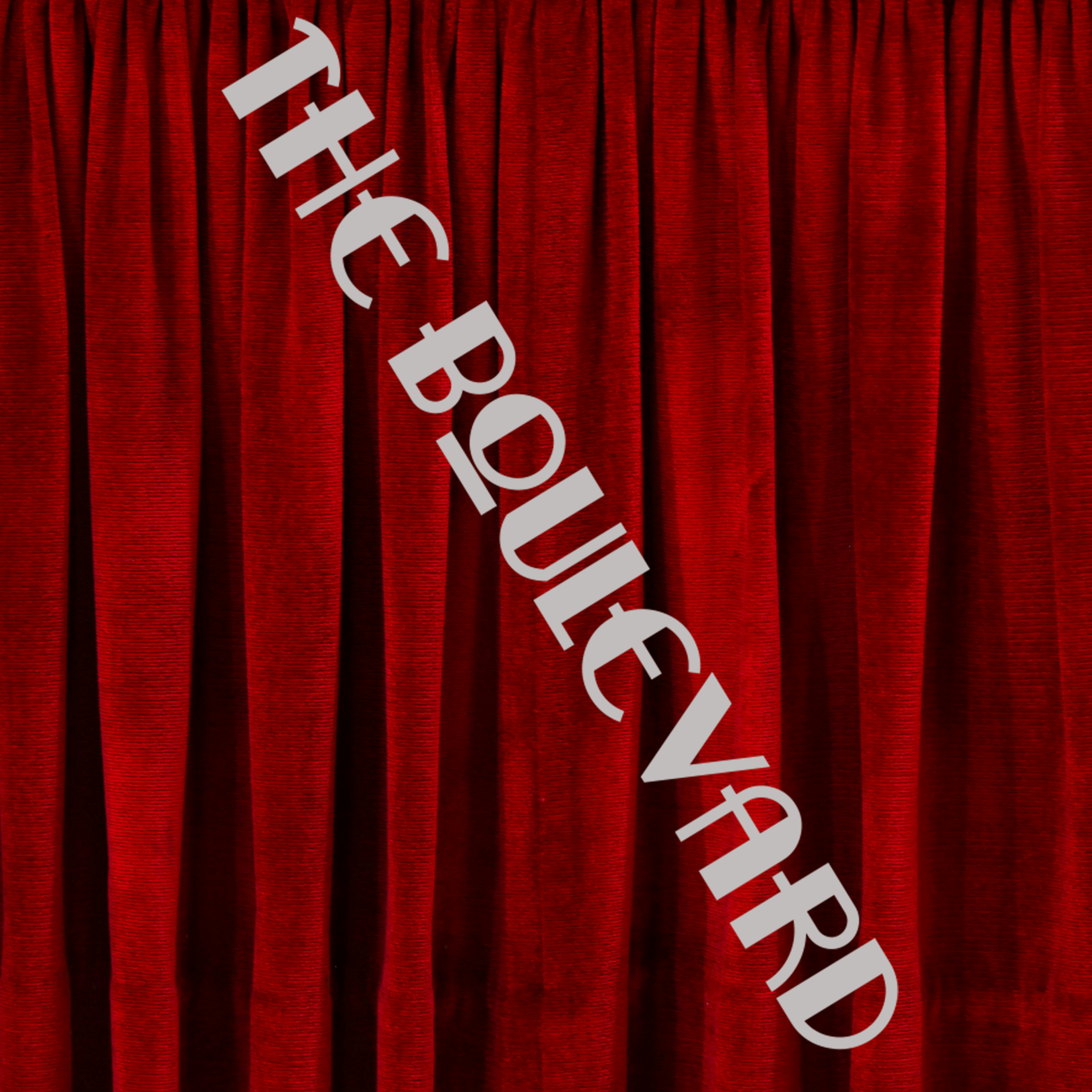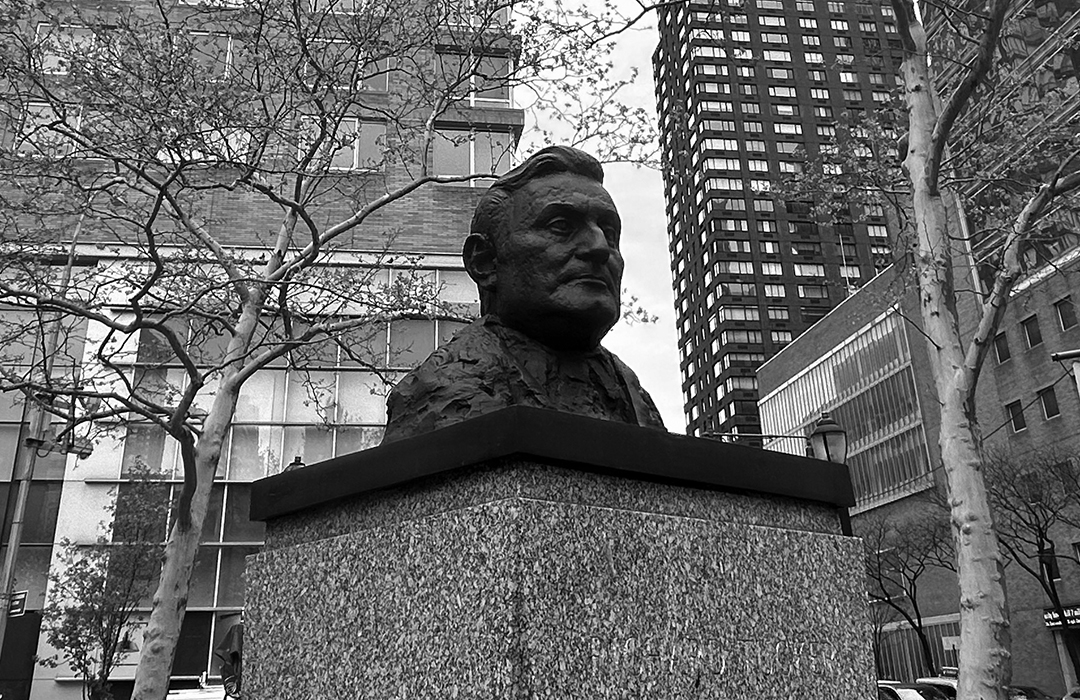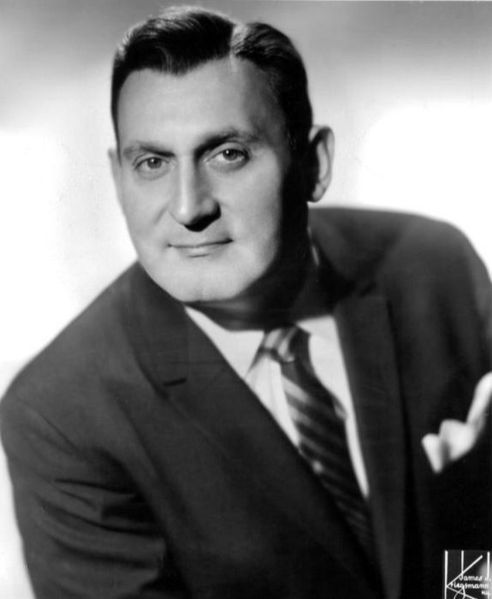
Richard Tucker Park
by Tom Miller
The Commissioners’ Plan of 1811 devised a regulated grid plan of streets and avenues. It was interrupted by the diagonally running Broadway. As the slanted thoroughfare crossed the right-angled blocks, triangular parcels resulted, their facing points resembling bowties or hourglasses. In some cases, the triangular plots were large enough to accommodate buildings, like the Fuller Building on 23rd Street, famously known as the Flat Iron Building for its shape. Others could only be used as common space.
Such was the case with the two triangular plots between 63rd and 64th Streets, and 65th and 66th Streets. According to the survey by the Department of Parks, The Park Question, in 1908, the tiny triangles had been acquired by the city on June 15, 1868. Called Empire Park North and Empire Park South, the acreage of the northern park was a mere .069 acres.
At the turn of the century, Empire Park South boasted an ornamental drinking fountain topped by a galloping bronze horse. The New York Times described, “In Empire Park, Columbus Avenue and Sixty-third Street, is a horse of bronze, a noble steed on a pedestal eight feet high. The horse is poised finely and seems in a hurry to win something. This tail sticks out straight behind him, showing that his speed is great.”
By the time of his sudden death of a heart attack on January 8, 1975, he was considered one of America’s leading operatic tenors.
Before dawn on the morning of May 25, 1906, three boys, the eldest of whom was 13, decided to make quick money by stealing the sculpture’s tail. By boosting one another up, one of them reached the horse’s tail. The other two clung to him, and the weight of the trio snapped the tail off. Their criminal success, however, was short-lived. The New York Times reported, “Detective Carmody bumped into Jimmie, Johnnie, and Hughie, waiting for the opening of the nearest junkshop.” The article added, “The three desperadoes spent all of yesterday howling dismally in the Children’s society building.”
The Proceedings of the Board of Aldermen on November 29, 1921, noted that the name of “Empire Park, at Broadway and 63d street, [is] to be changed to Dante Park.” Empire Park North dropped the “North” distinction shortly afterward.
On January 25, 1945, 31-year-old tenor Richard Tucker (born Rivn Ticker) made his debut at the Metropolitan Opera. The singer was essentially unknown, having worked mostly as a part-time cantor. By the time of his sudden death of a heart attack on January 8, 1975, he was considered one of America’s leading operatic tenors. Empire Park was soon unofficially deemed Richard Tucker Park.
On May 9, 1978, The New York Times reported that the family of Richard Tucker had offered to pay $75,000 to erect a seven-foot bronze statue of Tucker in the park. But there was a problem. Doris Freeman of Community Planning Board 7 lambasted the idea. “I personally don’t think it’s appropriate for that area. Gifts representing individuals have more appropriate places,” she said. “It seems to me the Metropolitan Opera Hall of Fame would be a more appropriate place.”
She was also critical of the Tuckers, who had presented a small plaster model by Milton Hebald to the Art Commission for consideration. “I think someone who has a gift of art to present to the city has got to be aware of a procedure that he or she should go through,” said Freeman. She reminded the reporter from The New York Times that gifts of art by individuals should first go to the Department of Cultural Affairs, which would then forward the idea to the Art Commission.
Doris Freeman of Community Planning Board 7 lambasted the idea.
Hebald’s model showed Tucker customed for his role of Des Grieux in Puccini’s Marion Lescaut. Because of Doris Freeman’s staunch opposition, New York City’s Art Commission, “in an unprecedented move,” according to The Times, formed a committee to study the plans. Three days later, the Lincoln Square Community Council chimed in. On May 12, The New York Times reported, “Support for the controversial statue of Richard Tucker, the opera singer, which is proposed for a West 66th Street, was affirmed yesterday by the Lincoln Square Community Council. The council head, Hans Reinisch, wrote to the City Art Commission saying in part, “We hope the commission will approve the proposed statue in the near future.”
It was not enough to quell the opposition spearheaded by Doris Freeman. In the end, Hebald’s statue was reduced to a bronze bust. Paid for by Tucker’s widow, Sara, the monument was unveiled in 1979. The bust sits atop a tapered granite pedestal inscribed with the titles of 31 operas in which he performed.
Although the tiny triangular space had been called Richard Tucker Park for decades, it was officially dedicated, and a Park Department name plaque installed in August 2017 to commemorate the tenor’s 104th birthday.
Tom Miller is a social historian and blogger at daytoninmanhattan.blogspot.com
PUBLIC ART SURVEY
Keep Exploring
Be a part of history!
Think Local First to support the nonprofits bringing life to Richard Tucker Park:
MEET Monica Blum!



